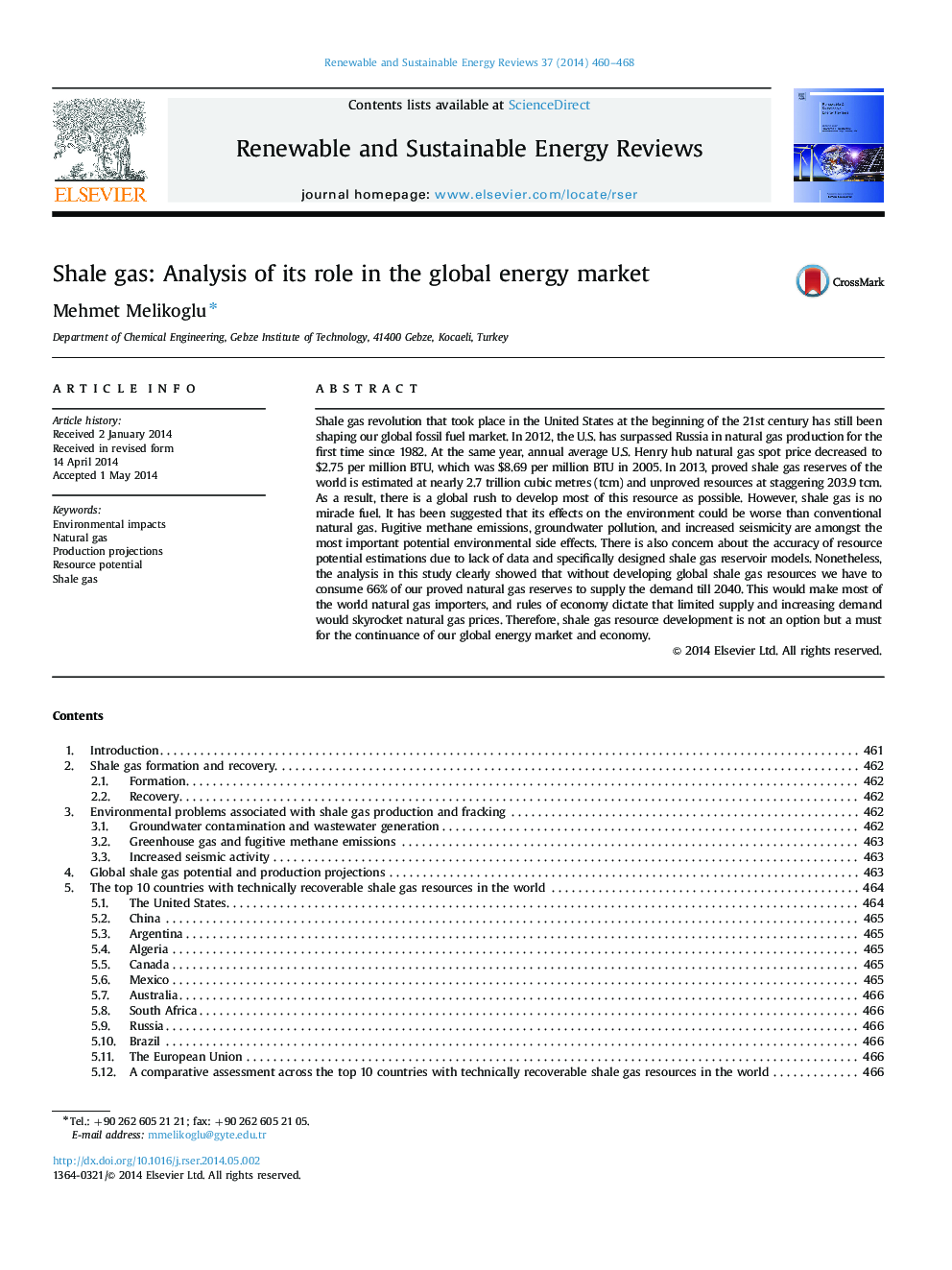| Article ID | Journal | Published Year | Pages | File Type |
|---|---|---|---|---|
| 8119636 | Renewable and Sustainable Energy Reviews | 2014 | 9 Pages |
Abstract
Shale gas revolution that took place in the United States at the beginning of the 21st century has still been shaping our global fossil fuel market. In 2012, the U.S. has surpassed Russia in natural gas production for the first time since 1982. At the same year, annual average U.S. Henry hub natural gas spot price decreased to $2.75 per million BTU, which was $8.69 per million BTU in 2005. In 2013, proved shale gas reserves of the world is estimated at nearly 2.7 trillion cubic metres (tcm) and unproved resources at staggering 203.9Â tcm. As a result, there is a global rush to develop most of this resource as possible. However, shale gas is no miracle fuel. It has been suggested that its effects on the environment could be worse than conventional natural gas. Fugitive methane emissions, groundwater pollution, and increased seismicity are amongst the most important potential environmental side effects. There is also concern about the accuracy of resource potential estimations due to lack of data and specifically designed shale gas reservoir models. Nonetheless, the analysis in this study clearly showed that without developing global shale gas resources we have to consume 66% of our proved natural gas reserves to supply the demand till 2040. This would make most of the world natural gas importers, and rules of economy dictate that limited supply and increasing demand would skyrocket natural gas prices. Therefore, shale gas resource development is not an option but a must for the continuance of our global energy market and economy.
Related Topics
Physical Sciences and Engineering
Energy
Renewable Energy, Sustainability and the Environment
Authors
Mehmet Melikoglu,
